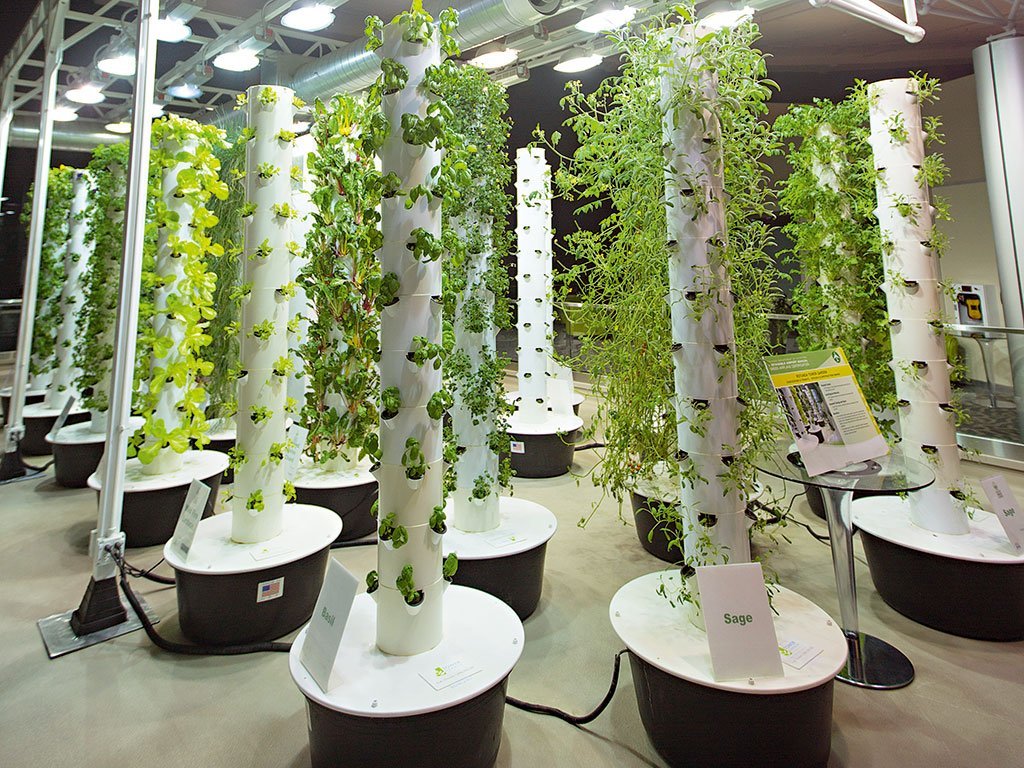 |
| Vertical Farming |
Vertical farming is revolutionizing modern agriculture by optimizing space and resource utilization through techniques like hydroponics, aeroponics, and aquaponics. This innovative approach addresses urbanization challenges and reduces the carbon footprint associated with traditional farming. By leveraging advanced technologies, vertical farming enhances crop yields, conserves water, and ensures a controlled environment free from climatic uncertainties. Ideal for urban centers, it presents a sustainable solution for future food production, benefiting both agri-businesses and environmental sustainability.
A Beginner’s Guide to Vertical Farming
Vertical farming represents a transformative approach within the sphere of modern agriculture. Leveraging the strategic placement of crops in vertically stacked layers, this innovative method promises to address some of the most pressing limitations inherent in traditional farming practices. As urbanization expands and arable land becomes increasingly scarce, vertical farming emerges as a viable solution to optimize land use and meet the growing demands for food production. Agri-businesses are particularly keen on this method due to its efficiency in space utilization and its potential to reduce water consumption significantly.
The rise in interest from the agriculture department and farming enterprises is fueled by vertical farming’s ability to minimize the carbon footprint associated with conventional farming. By localizing food production in urban settings, it reduces the need for extensive transportation networks, thereby cutting down on greenhouse gas emissions. Moreover, vertical farming employs cutting-edge technologies such as hydroponics, aeroponics, and aquaponics, which eliminate the need for soil and significantly conserve water resources. Hydroponics involves growing plants in nutrient-rich water solutions, while aeroponics uses a mist environment to deliver nutrients to plant roots. Aquaponics combines conventional aquaculture with hydroponics, creating a symbiotic environment that benefits both plants and aquatic organisms.
These technological advancements not only enhance crop yields but also ensure a controlled and predictable farming environment, free from climatic uncertainties and pest invasions. The efficiency and sustainability of vertical farming make it a compelling choice for those involved in farming and agriculture, especially in urban centers where space is at a premium. As we delve deeper into the specifics of vertical farming techniques and their benefits in subsequent sections, it is crucial to understand the foundational principles that make this method a promising addition to the future of agri-business and sustainable food production.
The Basics of Vertical Farming Techniques
Vertical farming is revolutionizing the agri business by offering innovative techniques to optimize space and resource utilization. A pivotal method in this field is hydroponics, which involves growing plants in a nutrient-rich water solution, devoid of soil. This technique allows for precise control over nutrient delivery, promoting optimal plant growth and higher yields. Studies have shown that hydroponic systems can use up to 90% less water compared to traditional farming, a significant improvement in water conservation. Common setups for hydroponics include nutrient film technique (NFT) systems, deep water culture (DWC), and wick systems, each tailored to specific plant needs and operational scales.
Another prominent technique in vertical farming is aeroponics, wherein plant roots are suspended in the air and periodically misted with nutrient solutions. This method enhances oxygenation, potentially accelerating growth rates and improving nutrient uptake. According to research from the agriculture department, aeroponic systems can achieve up to 70% faster growth rates than conventional soil farming. However, the setup requires sophisticated misting equipment and precise environmental controls, which can elevate initial investment and operational costs. Despite these challenges, aeroponics is highly suitable for leafy greens and herbs, which thrive under these conditions.
Aquaponics represents a symbiotic integration of fish farming and hydroponics. In this system, water from fish tanks is circulated to hydroponic beds, where plants absorb nutrients from fish waste, effectively purifying the water before it returns to the fish tanks. This closed-loop system not only reduces waste but also enhances resource efficiency. Initial costs for aquaponics can be substantial due to the need for fish tanks, water pumps, and biofilters. However, the dual production of fish and plants offers unique economic advantages, particularly for organic farming enthusiasts aiming to produce both crops and protein.
The types of crops best suited for vertical farming include leafy greens, herbs, strawberries, and certain varieties of tomatoes and peppers. These crops are chosen for their compatibility with controlled-environment agriculture and their relatively short growth cycles. While the initial investment for vertical farming setups can be high, ongoing operational costs are often balanced by increased yields and reduced resource inputs. Thus, vertical farming presents a viable and sustainable alternative for modern farming and agriculture, addressing both urban food security and environmental sustainability.


